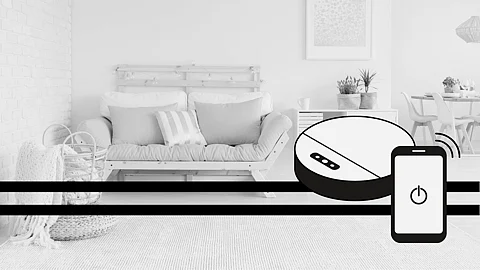

Buying yourself a Roomba (or a robot vacuum) is exciting because not only is it futuristic, it is also remarkably convenient to have. Living in a fully automated house means you may have to upgrade at some point — and what is better than having a little robot who tirelessly cleans the apartment for you? And if you're someone who lives with a pet, you already know how your floor stays constantly peppered with fur and the mess they make.
Long story short -- robot vacuums are uber-cool. Whether you're too busy to clean, have a large apartment, or solely want to gift it to your elderly parents — it can work wonders. However, like every home appliance, your Roomba too will need regular maintenance. And the issue with artificial intelligence in a human's world is that it will find itself stuck in situations beyond its control. So, before you go ahead and invest in one, read up a little on how it works:
What does a robot vacuum do?
Robot vacuums work on sensors. This means it can detect dust in a particular area with its pre-programmed algorithm and go about cleaning a room. Newer versions also sport sophisticated navigation software and have the ability to store floor plans to find their way through your house. It uses its vacuum suction to clean the floors and will require you to empty its tray from time to time. Of course, like any other appliance, your robot vacuum will need a charging dock that can charge it until it is ready to run again. Many models can operate using wi-fi and an app, so you can send your Roomba to an area that needs attention on priority. Your robot vacuum is almost like a personalised cleaner.
Don't blame your Roomba if it fails to find its way out of a tight spot. Robot vacuums — more often than not — end up sneaking into corners, and they cannot find their way out. And even with the best of their optical sensors, this problem could, unfortunately, continue persisting. A good idea would be to follow it around the house for the first couple of days to locate spots where it could get stuck.
And you thought your dog was the only problem! Don't be surprised to find your power cords missing, only to find them half-ingested in the trash by your Roomba. And while they may not be damaged if you pull them out on time, it is always a good idea to make sure your loose cables are not lying on the floor. Perhaps make it a rule to pick up anything you don't wish to lose!
— Sounds like a first world problem, but it surprisingly isn't. It is common for your robot vacuum to die or run out of battery amid its cleaning routine. And if you're someone with a large house, be prepared to go scouting for it every now and then. While there's not much you can do to avoid this, make sure you keep a track of your robot vacuum's battery level before going to bed. If required, you can also dock it overnight to avoid it dying out in the morning.
So, while Roombas and robot vacuums are the future of automated households, there will always be something they won't be able to cover. But we only hope that this guide can help you work your way around the blind spots with ease!
